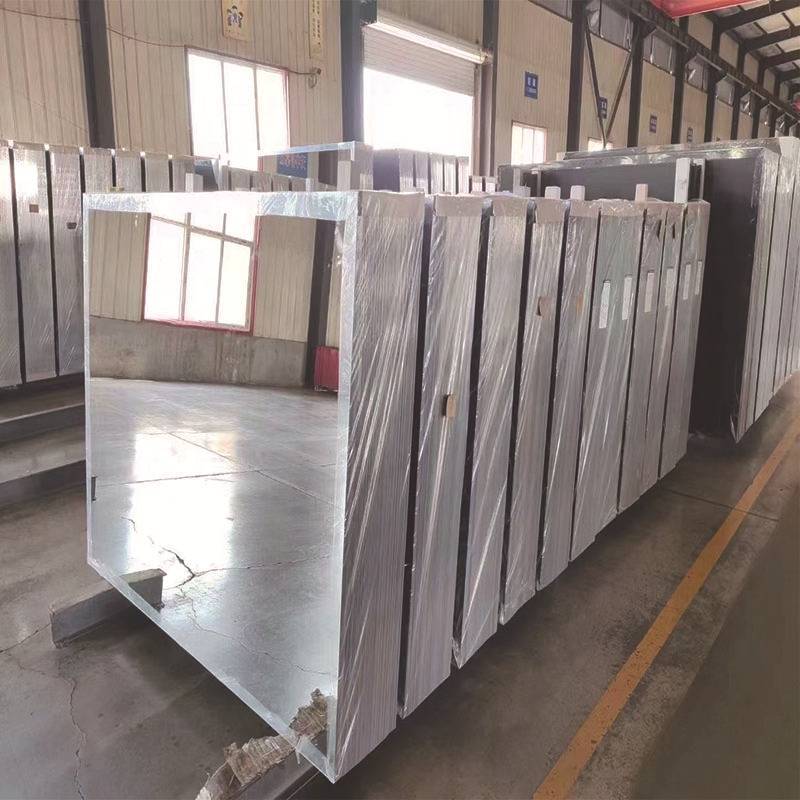The Rise of Low Iron Glass Factories A Closer Look at Their Impact and Innovations
In recent years, the glass industry has recorded an impressive transformation with the advent of low iron glass technology. This innovation has significantly altered the landscape of glass production and application, leading to the establishment of specialized manufacturing facilities known as low iron glass factories. These factories are dedicated to producing glass with exceptionally low iron content, thus ensuring higher clarity and transparency. As we delve into the intricacies of low iron glass, it becomes evident that these factories play a crucial role in various industries, from architecture to renewable energy.
Understanding Low Iron Glass
Low iron glass, often referred to as ultra-clear glass, contains a minimal amount of iron oxides—typically less than 0.1%. This reduction in iron not only enhances the colorless appearance of the glass but also improves its optical properties. The high level of clarity makes it ideal for applications where visibility is critical, such as in display cases, glass facades, and solar panels. The purity of low iron glass allows for a change in light transmission and minimizes color distortion, making it a preferred choice among architects and designers.
The Growth of Low Iron Glass Factories
The global demand for low iron glass has seen significant growth, remarkably impacting the development of specialized factories. These facilities are equipped with advanced technology that enables high-precision production methods. The last decade has witnessed a surge in the construction of low iron glass manufacturing plants, particularly in regions where building and construction are booming.
For example, countries in the Asia-Pacific region have emerged as key players in the low iron glass market due to rapid urbanization and industrial growth. Nations such as China and India have seen an influx of investments in glass production technologies, along with a rising demand for energy-efficient and aesthetically pleasing architecture. These factories not only contribute to local economies by creating jobs but also foster innovation in glass manufacturing techniques.
Environmental Considerations
low iron glass factory
One significant advantage of low iron glass factories is their potential environmental benefits. Traditional glass production is energy-intensive and often results in significant CO2 emissions. However, modern low iron glass facilities are increasingly incorporating sustainable practices and technologies to minimize their environmental footprint.
Many manufacturers are investing in renewable energy sources, such as solar and wind power, to fuel their operations. Additionally, advancements in production techniques have led to increased recycling of glass materials, which reduces the demand for raw materials and the energy required for production. By adopting such strategies, low iron glass factories can effectively contribute to the global effort towards sustainability.
Applications Across Industries
The versatility of low iron glass has led to its adoption across a plethora of industries. In architecture, its transparency and aesthetic appeal make it an attractive choice for facades, skylights, and curtain walls. Buildings adorned with low iron glass not only enhance natural light penetration but also create visually stunning structures that stand out in urban landscapes.
In the renewable energy sector, low iron glass plays a pivotal role in solar technology. Photovoltaic solar panels utilize low iron glass for enhanced light transmission, improving the efficiency of solar energy conversion. As the world transitions toward sustainable energy sources, the demand for high-quality low iron glass in solar applications continues to rise.
Furthermore, the automotive industry is also embracing low iron glass for windshields and windows, where clarity and visibility are paramount. The safety benefits associated with unobstructed views are pushing manufacturers to incorporate low iron glass into their designs.
Conclusion
In summary, the emergence of low iron glass factories marks a significant advancement in glass technology and production. These specialized facilities not only meet the growing demand for high-clarity glass but also contribute to environmental sustainability and innovation across various sectors. As industries continue to evolve, the contributions of low iron glass will likely expand, showcasing the essential nature of these factories in our modern world. The journey of low iron glass from production to application illustrates the intersection of technology, design, and sustainability—an intersection that will undoubtedly shape the future of the glass industry.
 Afrikaans
Afrikaans  Albanian
Albanian  Amharic
Amharic  Arabic
Arabic  Armenian
Armenian  Azerbaijani
Azerbaijani  Basque
Basque  Belarusian
Belarusian  Bengali
Bengali  Bosnian
Bosnian  Bulgarian
Bulgarian  Catalan
Catalan  Cebuano
Cebuano  Corsican
Corsican  Croatian
Croatian  Czech
Czech  Danish
Danish  Dutch
Dutch  English
English  Esperanto
Esperanto  Estonian
Estonian  Finnish
Finnish  French
French  Frisian
Frisian  Galician
Galician  Georgian
Georgian  German
German  Greek
Greek  Gujarati
Gujarati  Haitian Creole
Haitian Creole  hausa
hausa  hawaiian
hawaiian  Hebrew
Hebrew  Hindi
Hindi  Miao
Miao  Hungarian
Hungarian  Icelandic
Icelandic  igbo
igbo  Indonesian
Indonesian  irish
irish  Italian
Italian  Japanese
Japanese  Javanese
Javanese  Kannada
Kannada  kazakh
kazakh  Khmer
Khmer  Rwandese
Rwandese  Korean
Korean  Kurdish
Kurdish  Kyrgyz
Kyrgyz  Lao
Lao  Latin
Latin  Latvian
Latvian  Lithuanian
Lithuanian  Luxembourgish
Luxembourgish  Macedonian
Macedonian  Malgashi
Malgashi  Malay
Malay  Malayalam
Malayalam  Maltese
Maltese  Maori
Maori  Marathi
Marathi  Mongolian
Mongolian  Myanmar
Myanmar  Nepali
Nepali  Norwegian
Norwegian  Norwegian
Norwegian  Occitan
Occitan  Pashto
Pashto  Persian
Persian  Polish
Polish  Portuguese
Portuguese  Punjabi
Punjabi  Romanian
Romanian  Russian
Russian  Samoan
Samoan  Scottish Gaelic
Scottish Gaelic  Serbian
Serbian  Sesotho
Sesotho  Shona
Shona  Sindhi
Sindhi  Sinhala
Sinhala  Slovak
Slovak  Slovenian
Slovenian  Somali
Somali  Spanish
Spanish  Sundanese
Sundanese  Swahili
Swahili  Swedish
Swedish  Tagalog
Tagalog  Tajik
Tajik  Tamil
Tamil  Tatar
Tatar  Telugu
Telugu  Thai
Thai  Turkish
Turkish  Turkmen
Turkmen  Ukrainian
Ukrainian  Urdu
Urdu  Uighur
Uighur  Uzbek
Uzbek  Vietnamese
Vietnamese  Welsh
Welsh  Bantu
Bantu  Yiddish
Yiddish  Yoruba
Yoruba  Zulu
Zulu 

